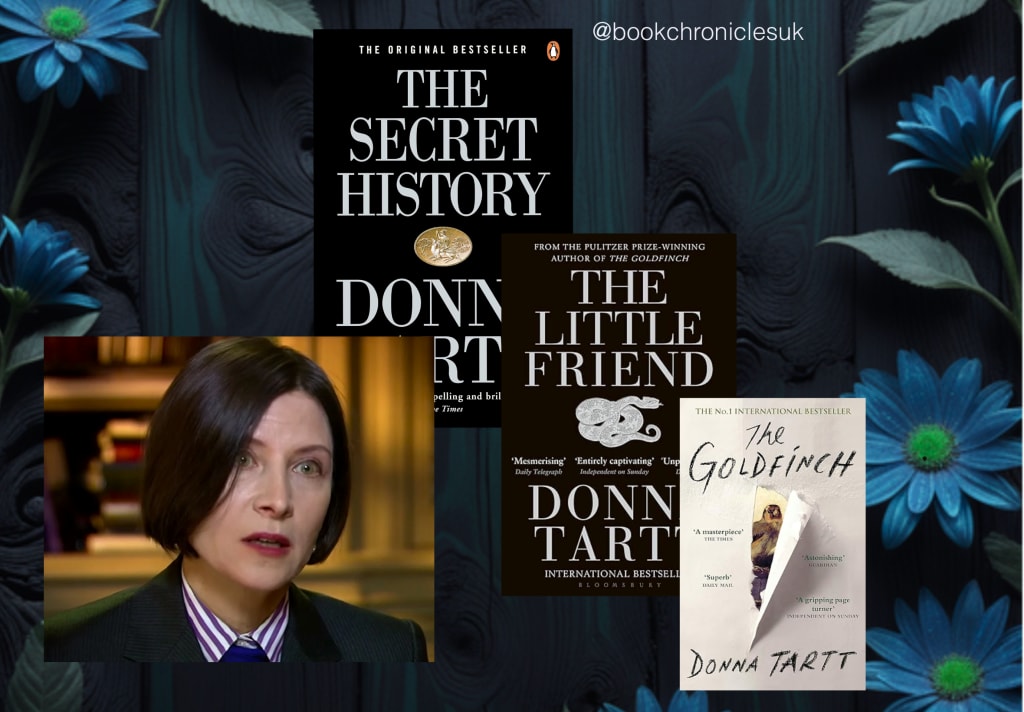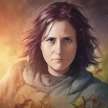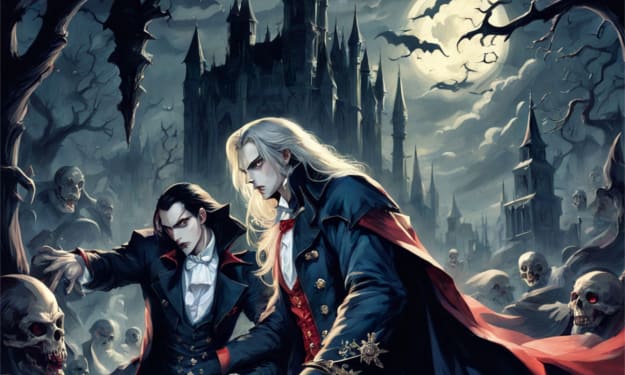The Illusive Donna Tartt
Her books have spanned decades, but how much do we know about her?

A name you may not have heard of for a while but may hear more of soon is Donna Tartt.
Why?
She releases a book every ten years, and we are slightly overdue. The Goldfinch was last released in 2013. Tartt first exploded into the literary scene in 1992 when she released The Secret History. Her mix of mystery, intrigue and beautiful prose has earned her a place on the list of great writers.
So come with me on a journey through the life of one of my favourite authors and learn a little more about this highly mysterious writer.
The Little We Know
Tartt was born on 23 December 1963 in Mississippi. She grew up in a small town called Grenada. She tells stories in interviews of constantly reading as a youngster and devouring books at an incredible speed.
When she was five years old, she wrote her first poem, and at thirteen, she was published for the first time.
From 1981 to 1982, she attended the University of Mississippi, where her writing impressed writer Willie Morris. Morris showed her work to Barry Hannah, a university resident writer. Both men encouraged her to transfer to Bennington, Vermont, to increase her experience.
She worked alongside many writers here, but none of them made as much of an impact as her friend Bret Easton Ellis, to whom she dedicates The Secret History.
Bennington College inspired her for The Secret History, none more so than the environment. If you visit Bennington, it will not take you long to see the similarities between that and the college Richard attends. She started writing the novel at college but did not finish it for ten years.
Her Books
Tartt has written just three books; despite this, she is a highly successful author with a fantastic following. That is mainly due to the quality of the books she writes.
Her first novel was published in 1992 when Tartt was twenty-eight. She started writing it when she was nineteen, and she even states that the success of it surprised her. She worked in solitude for almost nine years before she submitted it to publishers. That was when a bidding war started amongst publishes, unheard of for a debut author.
Tartt states that the idea for the book was inspired by the Greek Tragedies, where you know the end of the story almost before you start reading. Although we all know what happens, the Iliad is full of suspense that keeps us reading through.
The Secret History is a novel that follows a group of privileged college students at an elite liberal arts college in New England in the 1980s. The story centres around a group of six friends who are part of a tight-knit clique, united by their shared love of classical literature and desire to distance themselves from their families.
As the group delves deeper into their studies, they become increasingly disillusioned with the superficiality of their peers and begin to see themselves as superior. Tragedy strikes when one of the group members, Bunny Corcoran, discovers their secret and threatens to expose them. In a moment of panic, the group decides to kill Bunny, leading to a chain of events that changes their lives forever.
This novel lived up to the publisher's initial interest as it has become a cult classic. It is primarily considered the novel which inspired the landscape of the dark academia genre. It spent an impressive 13 weeks on The New York Times best-seller list.
Her second novel was published in 2003. The Little Friend is considered the problematic middle child and is less popular than the rest. It is my last Tartt to read. It won the WH Smith Literary Award in 2003
The novel follows the story of Harriet Cleve Dufresnes, a 12-year-old girl growing up in a small town in Mississippi in the 1970s. The story follows Harriet's anxiety surrounding the unexplained death of her brother, Robin, who was killed at the age of nine.
The dynamics of Harriet's extended family–particularly her aunts–are a strong focus of the novel, as are the lifestyles and customs of contrasting Southerners.
As Harriet digs deeper into the mystery, she uncovers secrets and lies about her family's past, including her parents' troubled marriage. The novel explores themes of family, trauma, and the power of childhood imagination.
Through Harriet's eyes, Tartt masterfully weaves together elements of mystery, suspense, and coming-of-age drama, creating a haunting and atmospheric tale that explores the complexities of human relationships and the darkness that can lurk beneath the surface of seemingly idyllic small-town life.
Her last novel, The Goldfinch, was published in 2013 and won the Pulitzer Prize in 2014. Tartt states that the idea for the book came when she was doing the promotional tour for The Secret History in Amsterdam. In true Tartt tradition, she recorded a snippet of an idea in her notebook.
The novel tells the story of Theo Decker, a young boy who survives a terrorist bombing at the Metropolitan Museum of Art in New York City that kills his mother. The bombing occurs when Theo is 13 years old, and in the aftermath, he is left with a profound sense of grief and disconnection from the world around him.
Theo is taken in by a family friend, Larry, and his wife, who provide him with a stable and loving home. However, Theo becomes increasingly withdrawn and isolated, struggling to come to terms with his loss. He finds solace in a small painting, The Goldfinch.
As Theo navigates his teenage years, he becomes obsessed with the painting and its symbolism, using it to connect with his mother and find meaning in his life. He also becomes embroiled in a world of art forgery and deception, further complicating his emotional state.
The Goldfinch is a sweeping and complex novel that spans decades, following Theo's journey as he grapples with his past and searches for a sense of belonging and redemption. As with The Secret History, Tartt dispels the myth that women can not write books with a male voice.
The fantastic thing about Tartt's writing is that none of her three novels overlap much in setting and circumstances.
The Power of a Notebook
Tartt is essentially a recluse taking to her house for the ten years it takes to write her books; she shuns the media. Looking at the few interviews she sits for when her books are read, it is clear that Tartt is an avid note-keeper. She speaks about her notebook on several occasions.
She has been known to write anywhere, but she distinguishes that this is rarely completed pages but more the skeleton for her novels, which she writes in her notebook. When she thinks of it, she writes it down. She states that most of the notes are tiny parts of her brain that are too short to be important, but together, they create a novel.
Notes from these notebooks then start the stories as she links them to the finished article. She mentioned several times during interviews that she felt uncomfortable in environments where she could not have her notebook near her.
She includes a range of details, such as history, gossip, true crime, or stories that inspire her. She is also an avid dream journal keeper; she stated that, on occasion, her dreams have made their way into her books.
I think the assumption is that novelists get some giant idea all in one piece, and then all they have to do is sit down and write it. And that may be true for some novelists but for me a book is a storm, a swarm, a party. Ideas don’t drop down on me singly, in monumental chunks, but flow in from thousands of different sources and tributaries evolving over a long period of time, and I think the texture of my books reflects that.
Writing Routine
The start of all her books comes from her notebook. She writes first by hand, scribbling in red and blue and stapling note cards to pages. Only when she has this structure will she start typing.
She tends to submerge herself in the world she is creating; for example, when writing The Goldfinch, she spent a lot of time in New York hotels and the public library. When asked why she writes in public places, she states that every time you need a character, all you have to do is look up. It may be her less-than-public life helps with her anonymity when writing in public places.
Tartt writes every day; she starts writing for three hours in the morning, and if the work is going well, she keeps working until she is tired. She describes this as the feeling a gambler has when they are winning. They do not want to leave the table.
However, if the writing is not going well, then after three hours, she will abandon it for the day and go and do something else. She writes in quiet rooms and prefers no background noise but has stated that her favourite modern artist to listen to is Lana Del Rey.
When she has finished writing, she will treat herself and read. She reads what she wants, not what she thinks she should read. However, she states that most of her reading is linked to her current project.
Writing is one level deeper than reading a book
Donna Tartt, the Reader
When watching interviews with Tartt, the one thing that struck me was how her face lit up when she talked about reading, especially the works of Charles Dickens. Reading her books, it is clear that Dickens inspired her prose as much as her imagination.
As a reader, she shows the same level of detail as she does in her writing. She purposely left Dicken’s Bleak House to last because she knew it would be her last Dickens and wanted to enjoy the moment more. She now says it is her favourite among all his novels.
Dickens became part of her life. She has been compared to him many times and states that this is a huge compliment.
When asked what she was reading whilst writing The Secret History, she gave a comprehensive list of books she not only read but also credits them with inspiration for some of the scenes. These books include the following:
- Brideshead Revisited
- George Orwell
- Jekyll and Hyde
- We Always Lived in the Castle
- The Talented Mr Ripley
- Plato's Dialogues
When she finishes writing, she states she can not wait to dive into her reading as a form of relaxation.
I don’t feel guilty about reading any book I enjoy, or that keeps me interested, though sometimes I feel guilty about listening to an audiobook instead of reading the book on paper. That’s probably silly, though, because I listen to audiobooks at times when I wouldn’t be reading anyway, when I’m walking the dogs or ironing shirts.
Is there more?
The Secret History, for me, is her best work; it is a book I fell in love with and one of only a handful I have re-read. I love her other work, but there is something beautiful about this first one.
If this article has inspired you, then the good news is that you only have three books in her collection to read. I would suggest you read them in the order they were published, but as they are all standalone, you can start anywhere.
Tartt has stated that she is writing another novel, so I hope the next article I write will be reviewing her new book because I will be queuing up to get my hands on a copy.
The beauty of her books is summed up in this quote from her.
For me, writing a novel doesn’t feel like an address to an audience so much as a direct interaction with one other person.
About the Creator
Sam H Arnold
A writer obsessed with true crime, history and books. Find all my dedicated newsletters whether you are a true crime fan, bookworm or aspiring writer on Substack - https://substack.com/@samharnold
Enjoyed the story? Support the Creator.
Subscribe for free to receive all their stories in your feed. You could also pledge your support or give them a one-off tip, letting them know you appreciate their work.






Comments
There are no comments for this story
Be the first to respond and start the conversation.